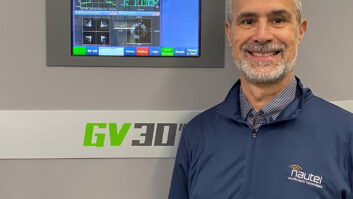Service provided
Oct 1, 2001 12:00 PM, Chriss Scherer, editor
When a major historical event takes place, we often remember, and are usually asked repeatedly, �Where were you at that time, and what were you doing?� September 11 is one of those days. Personally, I was at home that morning. I was packing my suitcase, preparing to leave that afternoon for the Syracuse SBE Convention and National Meeting. I heard about the event on the radio and then turned on the TV to see what was happening. I stopped packing almost immediately and sat and watched the subsequent events occur.
This tragedy produced many heroes and victims. I commend the heroes for their efforts and offer my condolences to the families of the victims. The discussion of the aftermath of this disaster, however, is better left to other forums that are better suited and more appropriate for that discourse.
What is relevant to broadcasting is that my media experience is not unlike that of most people who watched or listened as the news was delivered. As information was delivered over the airwaves, the Internet, typically a space full of timely information, fell short of its up-to-the-minute reputation. The Internet was worthless as an information source. If you could connect to a news website at all for text information, there was so much traffic that data was barely able to move through the system to provide any level of acceptable quality for a streaming source. This e-bottleneck lasted through the morning and into the early afternoon.
When the public wanted to learn about the events unfolding, the most reliable system was one that was based on technology nearly 100 years old. Conventional radio and television were able to reliably deliver the information to the masses without regard to the number of receivers in use. While Web servers choked trying to respond to all the connection requests and Internet pathways were brimming with data packets trying to be sent, the airwaves were reliable and clear.
This should really come as no surprise. One of the drawbacks to streaming media is the net congestion that occurs on a typical day. In a situation where the system is pushed to its capacity, the limitation is obvious. With shortcomings such as this online, the ether shows itself to be a system capable of reliably delivering information in a crisis. Short of jamming transmitters or severe atmospheric interference, the radio waves would continue to provide the information in a reliable fashion.
During the days following the attacks, the Internet showed its value in another way. While radio and TV continued to cover the story in an ongoing process, the online medium was able to provide audio, video, animations and analysis on demand from the events. This complimentary coverage in addition to the �legacy� media delivered a greater depth and broader reach than either could accomplish alone.
Once again, we have an example of how traditional broadcast can work well in tandem with the online offerings. The airwaves can provide an uninterrupted information path to a mass audience through its one-to-many infrastructure. The Web can deliver niche information to smaller segments or individuals in its one-to-several or one-to-one models.
There are those who believe that the Internet will be the delivery platform of radio’s future. This may be the case one day, but it is certainly not the case now.












